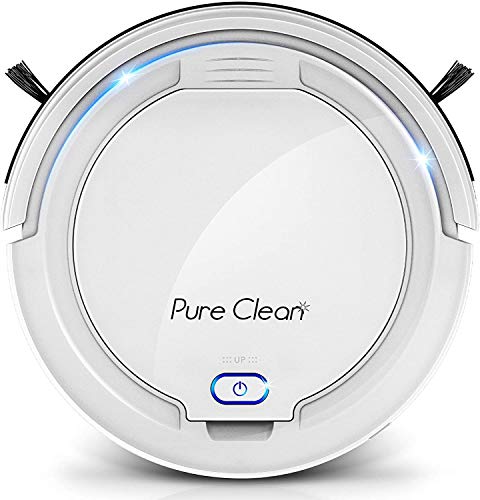10 Things Everyone Hates About Self Emptying Robot Vacuum

Self Emptying Robot Vacuum
The most effective item you can purchase for your home is a self-emptying robotic vacuum. It makes the cleaning process hands-off and more efficient, especially for people who have larger homes.
The dock of a robot rests in a small dustbin that can be cleaned out every couple of days or more often depending on the model. Self-emptying bases are often large and bulky.
It's more practical
Consider purchasing a self-emptying robotic vacuum if you're tired emptying the bin of dust from your robot vacuum after every cleaning session. These bases contain dirt in a much larger container and are typically rated for how many days (or cleaning sessions) they can hold before you need to dump them. This means that your robot is less likely to reintroduce dust clumps to the air and make allergies worse.
These models tend to be more advanced than the standard robot vacuums, making them more user-friendly. Certain models come with a map that lets you to label rooms or create virtual no-go zones in certain areas. Others can return to their base to recharge after a cleaning session, or if the power is exhausted. Some models have multiple cleaning modes such as mop, spot-clean, and auto-mop. Some models also allow voice control via Alexa or Google Assistant.
Be prepared for a noisy process. If the bin is full, the device will take a couple of minutes to empty it. This can be disruptive. It is possible to alter the settings to make it a quieter vacuum however they will be louder. Certain vacuums come with DND mode which is helpful when you're using the device in your bedroom or other places where it could disturb you.
Robot vacuums may also get stuck in cords, shoelaces or pet toys. They could even lose their way and issue an SOS for help. If this happens, you'll need to physically put it back into its base to reorient and begin cleaning or charging. This is a little inconvenient but it's no more than you'd need to manually with a different vac.
Overall, self-emptying robot vacuums offer a lot of convenience and are well worth the cost when you're tired of emptying the robot's trash bin after each cleaning cycle. But it's important to remember that they're not the ideal solution for every house, as their dirt capacity is less than an ordinary vacuum, and the base may not be large enough for every household.
It's safer
While a robot vacuum is more advanced than your traditional stick or barrel vacuum, it's still a machine that has moving parts that can break down in the same way. It is the reason it is often more expensive and is harder to fix than a regular vacuum. Robot vacuums require more maintenance than regular vacuums, which includes cleaning the filters and brushes. Some robot vacuums have extra components, like sensors, a computer brain, and app integration. This makes them more difficult to repair and use.
It's a good idea to know that many of these issues can be prevented by using a robot vacuum cleaner. Manufacturers evaluate products according to how much dirt can be stored in the external container for 30 to 60 days. It is easy to overfill the canister of your robot vacuum if you need to empty it every two weeks. If your robot is able to automatically empty the canister it will not only be easier to use, you will be able use it more frequently.
There are many manufacturers that sell additional brushes and filter kits that can be used to replace the worn ones. This will prolong the life of your robot and help it perform at an optimal level for longer, making it a smarter option than a basic model. Additionally, some brands also sell various zoned saving features that allow you to set no-go zones so your robot doesn't accidentally clean certain areas.
Additionally, the majority of these models also have a quiet mode, which will make it less likely to disrupt you while the machine is running. This is particularly useful for families with small children or pets. Of course when you live in a smart home or work from home, you can schedule the robot vacuum to visit when you're out of the house.
It's cheaper
A typical robot vacuum can only hold so much dirt before the dust bin requires emptying. The dust will be scattered back into the air, which can cause sneezing, and even a rash in homes with allergy-prone families. This issue is solved with self-emptying robot vacuums. They automatically empty the dirty dust into a bin outside. The best models can last several months or even decades before the bin is empty.
These robots are ideal for families with busy schedules, since they keep the house clean without having to stop and empty the base. They're especially helpful in high-mess areas like kitchens and living rooms where children and pets leave their mark. They're also a good investment for older homes with trouble keeping their rooms clean.
As more robotic vacuums equipped with self-emptying base enter the market, their cost is decreasing. They typically cost less than $400. This is a significant saving over the Around $1,400 on a typical robot vacuum. Furthermore, these vacs are more flexible than traditional models. Some vacuums are able to be used in both dry and wet mode. This lets you utilize the vacuums for sticky and wet spills, as well as soiled and dirty carpets.
They also can work with apps to schedule cleaning time and sync with digital voice assistants, such as Alexa, Google Assistant or Amazon's Echo. They are easy to use by people who do not have the time or patience to operate a robotic vacuum with a remote.
There are some disadvantages with this technology, however. The most significant issue is that the bases themselves are large, taking up a lot of floor space. They can also be heavy, which adds to the total cost of the device. The process of emptying the device can be a bit noisy and slow.
While self-emptying robot vacs are a great way to save time and effort, you'll need to clean out the rest of your home regularly. You should also remove any wet spills and clean the charging contacts and sensors on the robot's dock and base.
It's greener
The most efficient self-emptying robot vacuums are typically more eco-friendly than non-self-emptying counterparts. The docking station of the vacuum functions as a bin to collect the debris left from cleaning cycles. When the bin is full, simply empty it and replace it with a new one, similar to the way you would use an ordinary vacuum. The filtering bin helps to keep dust from entering the home that would otherwise be released into the home's atmosphere, making these robots an ideal choice for homes that suffer from respiratory issues or allergies.
However, despite their greater environmental friendliness, some self-emptying robots do have disadvantages. They can be noisy, for instance. The sound is usually more loud than the motor of the vacuum, and it can come at random times during a run. It can be distracting, especially if you're cooking or working while the robot is running.

Another problem is that self-emptying machines can take up a lot of space on the floor. They typically have a massive base that can accommodate several months or even years of trash. This can be an issue in smaller houses and apartments where every inch counts. If you opt for a model which can also mop, the tank is huge and will require a larger floor space to keep it from overflowing or spilling out.
It can be a challenge to install them. You'll need to find an area to place the base that won't be too difficult to access and then you'll need to clean the charging contacts and sensors before you are able to use them. The majority of these models require an initial run without cleaning to create maps. robot vacuum that vacuums and mops employ different mapping techniques, such as smart cameras or LIDAR (Light Detection And Range) which is similar to radar.
Overall, a robot vacuum that can empty itself is a great investment. It will make your life much easier. If you are a busy parent who is trying to manage children, work and other tasks, being able to switch on the machine and let it do the work will be extremely helpful.
